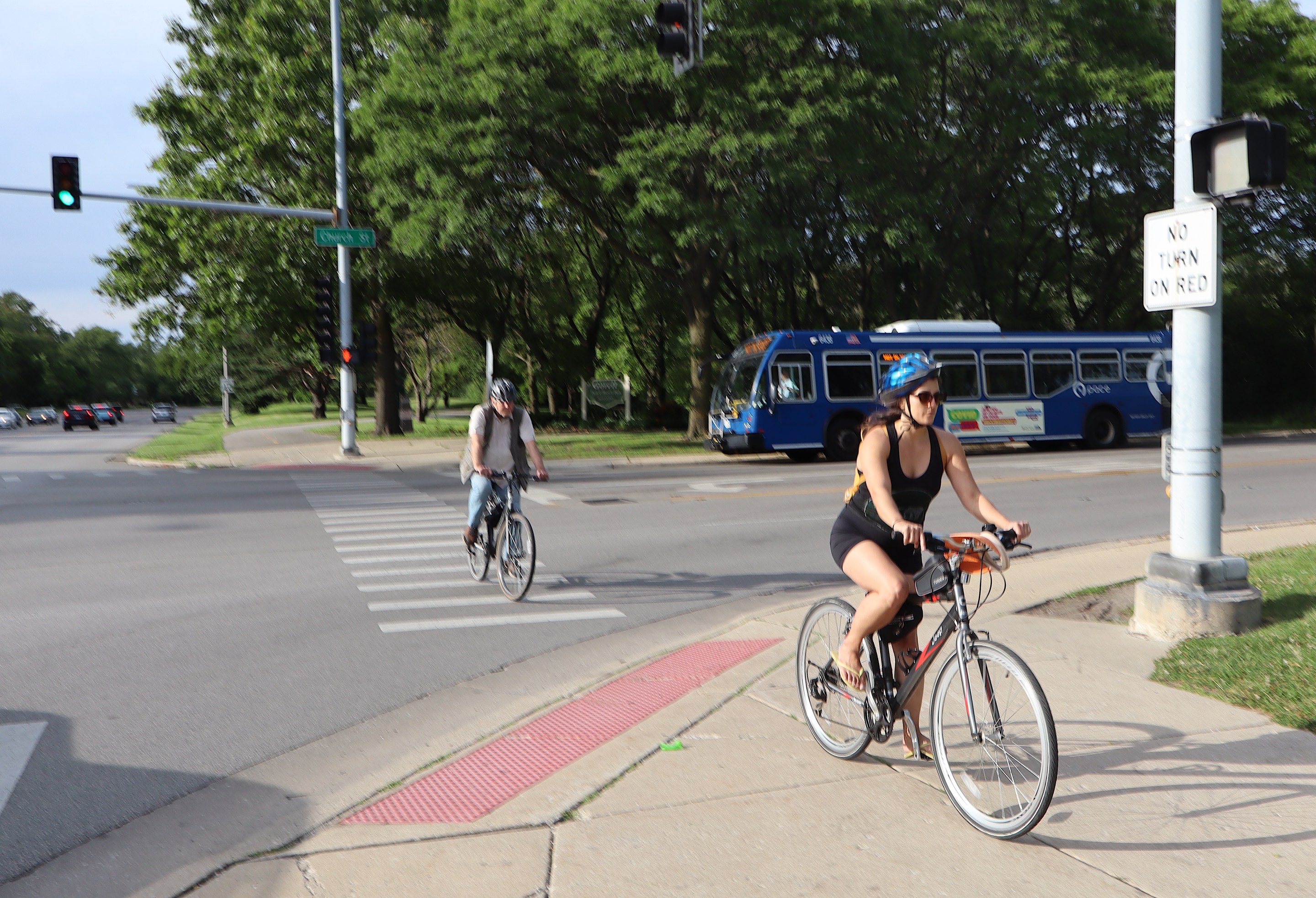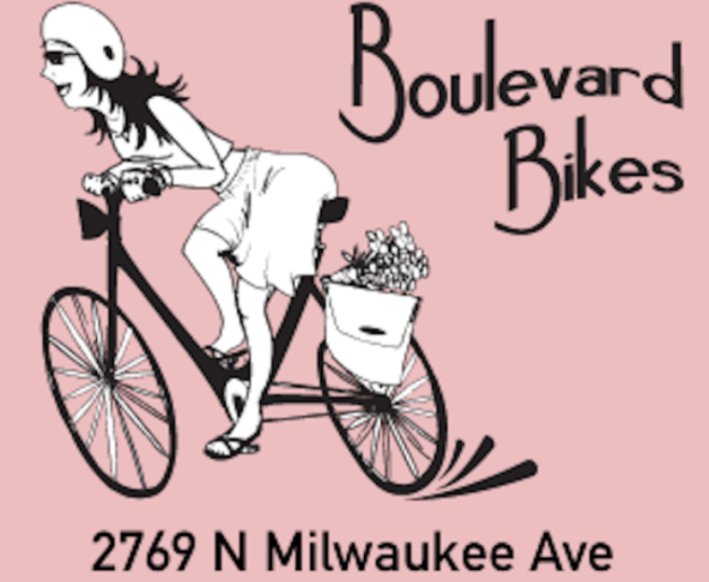
As previously discussed on Streetsblog Chicago, the Village of Skokie hopes to complete a 2.7-mile east-west bike route on Church Street, currently a four-lane road, between Linder Avenue and McCormick Boulevard. Review the plans online here.
However, the project has faced bitter opposition from some neighbors who are upset about the plan to eliminate parking spaces to improve sight lines, and argue that the new street layout would make traffic jams more common. Conversely, others would like to see a more robust plan, with physical protection to help prevent reckless, intoxicated, or distracted drivers from striking people on bikes.
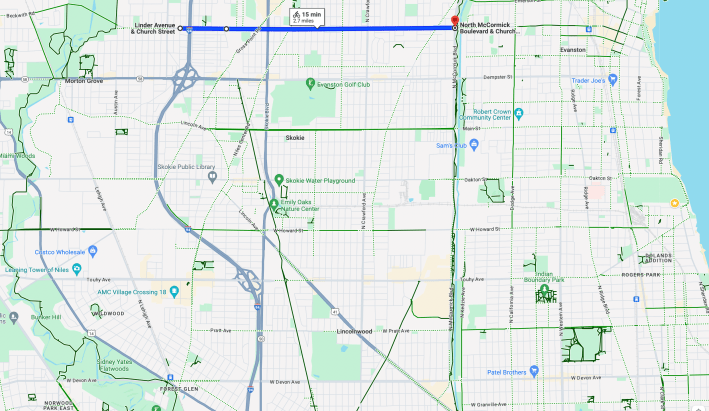
The new Church Street bikeway would go between the North Shore Channel Trail and sculpture garden at McCormick Boulevard and the western border of the village, which is less than a mile east of the North Branch Trail. The project also includes upgrades to walk signals and wheelchair ramps at intersections. The initiative is funded with $1,600,000 in federal grant money, plus a 20 percent local match of $400,000. Construction is slated for 2025.
To share information about the proposal and collect more feedback, the Village held the final open house for the project last Thursday, June 27, at the Weber Leisure Center, 9300 Weber Park Pl.
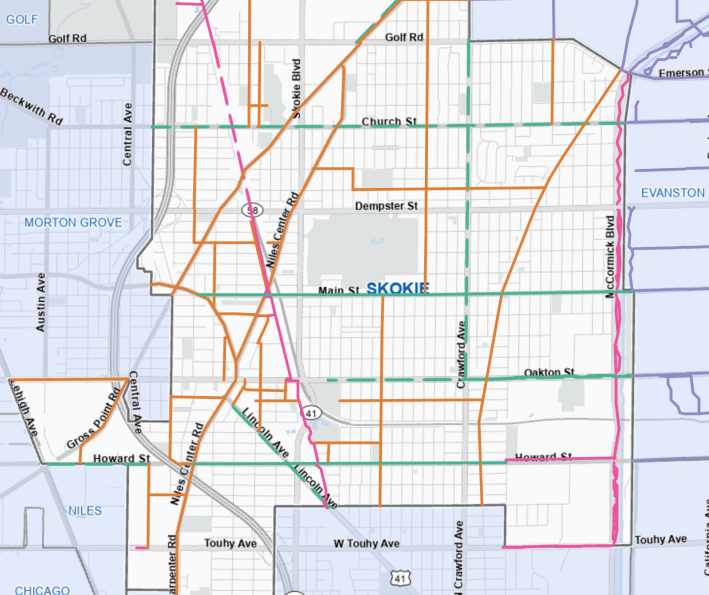
"[The Church bikeway is in] our bikeway system plan that is part of our comprehensive plan that was passed by the Board of Trustees in 2004," Skokie Senior Engineer Samantha Maximilian told Streetsblog at the meeting. "This is also in line with our Complete Streets policy and our immune sustainability plan. We have various different items that is, you know, public information, and that this project, fully supported, is aligned with those ideals, and the plans that have been adopted by the village."
"This project has been a long time in the making," Maximilian noted. "So it's been very nice to kind of see this be able to move forward, at least even to this stage where we are getting public feedback. My hope is that narrowing the road... and being able to provide organization of where everybody's supposed to be will help calm a little bit of the traffic and slow that kinetic energy of light-speeding throughout Skokie."
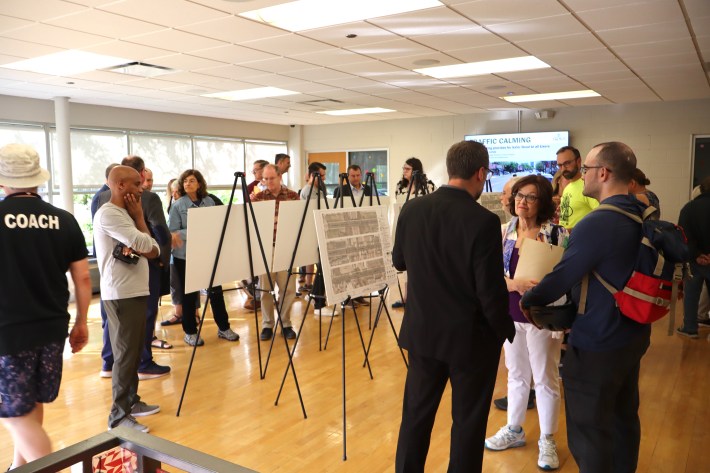
She acknowledged that at the June 13 public meeting, many people expressed concerns about the project's impact on the street. "Some people don't like that we are [converting] a lane of traffic to accommodate bike lanes and keep [curbside] parking. In some areas, we will have to reduce parking to improve sightline visibility within the intersection. So some people are concerned that they're losing parking on their street."
Interestingly, some folks at the June 27 meeting objected to the plan to better organize traffic to make it safer. "What they're proposing now is to formalize this so that whether you're driving or riding or walking, you are faced with what's like supermarket lines," said Skokie resident Phyllis Lyons. "Which supermarket line are you going to be in? It's kind of heartbreaking to see. That atmosphere would be different."

Indeed, the experience of using the street would be different, in a good way, noted supporters, with less speeding by drivers and dedicated space for biking, making the corridor safer for all users. Attendee Ben Harris is quite enthusiastic about the plan. He said he showed up for the meeting to learn more about the parking situation, and now understands that relatively few parking spots will be converted. "And I've got to admit, when I drive down [Church], you see some cars parked, and then it's open," he added, indicating that losing a few existing spots to improve sight lines shouldn't cause problems.
"All they're going to be doing is going to be using the existing road and just painting the bike lanes," Harris said, so there won't be major construction hassles. He noted that some parts of the four lane street would be converted into one travel lane in each direction, with a turn lane, i.e. a four-to-three conversion, which should help calm traffic. [See more details about the proposed street layout in the update at the end of this article, as well as the comment from pedal_powered below. - Ed.]
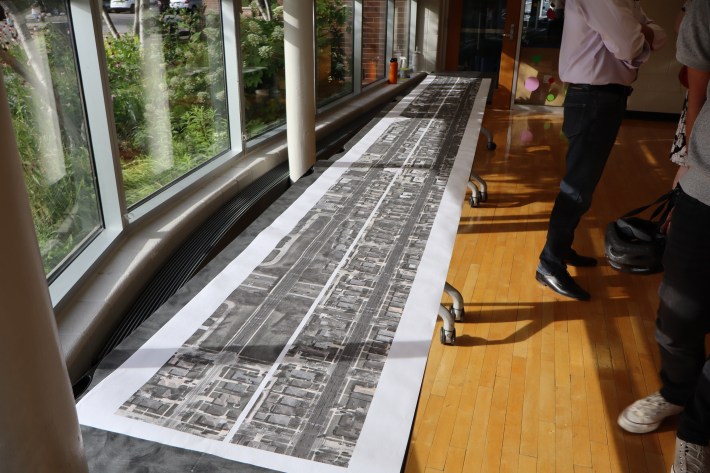
Robert Keding, a Streetsblog reader who previously gave us a heads-up about the Skokie bikeway tzimmes, told us he was pleased that roughly as many bikeway proponents as opponents showed up for the final meeting. "The biggest talking points were still car-centric, but bike advocates provided greatly needed statements of support, despite the proposal's shortcomings." He has previously pointed out that the plan lacks physical protection for cyclists, and includes stretches with "sharrows", bike-and-chevron pavement markings, aka "shared-lane makings", instead of even non-protected striped bike lanes.
"I appreciate your inclusion of the last meeting on your blog," Keding added. "It certainly made a difference. The representatives from Skokie and the engineering firm said they saw the piece. Members from both Skokie Bike Network and Evanston Transit Alliance were in attendance since this is a regional connection of critical importance. Hopefully we get good news in the coming weeks that a final design with the bike lanes is moving forward."
Review the plans for the Church Street bike lanes here.
Update 6/29/24, 6:00 PM: After publication if this piece, Robert Keding provided this statement about the proposed street layout. "At the busiest and most dangerous intersections along Church Street, at Skokie Boulevard, Gross Point Road, and McCormick Boulevard, the bike lanes will vanish which will force cyclists to merge into moving traffic. A four-to-three road diet conversion here would be the sensible solution, but evidently this was eliminated from consideration early on by the Illinois Department of transportation, so the community didn't even have a chance to discuss it as an option. To encourage more cycling we need infrastructure built for all ages and abilities so it's worrying we're still planning with a mindset for drivers and not protecting the most vulnerable road users. With these stretches of sharrows I worry about future safety incidents and that the potential for this corridor will remain unrealized because many will still find it unsafe to cycle on."

Did you appreciate this post? Please consider making a tax-deductible donation, to help keep Streetsblog Chicago's sustainable transportation news and advocacy articles paywall-free.
